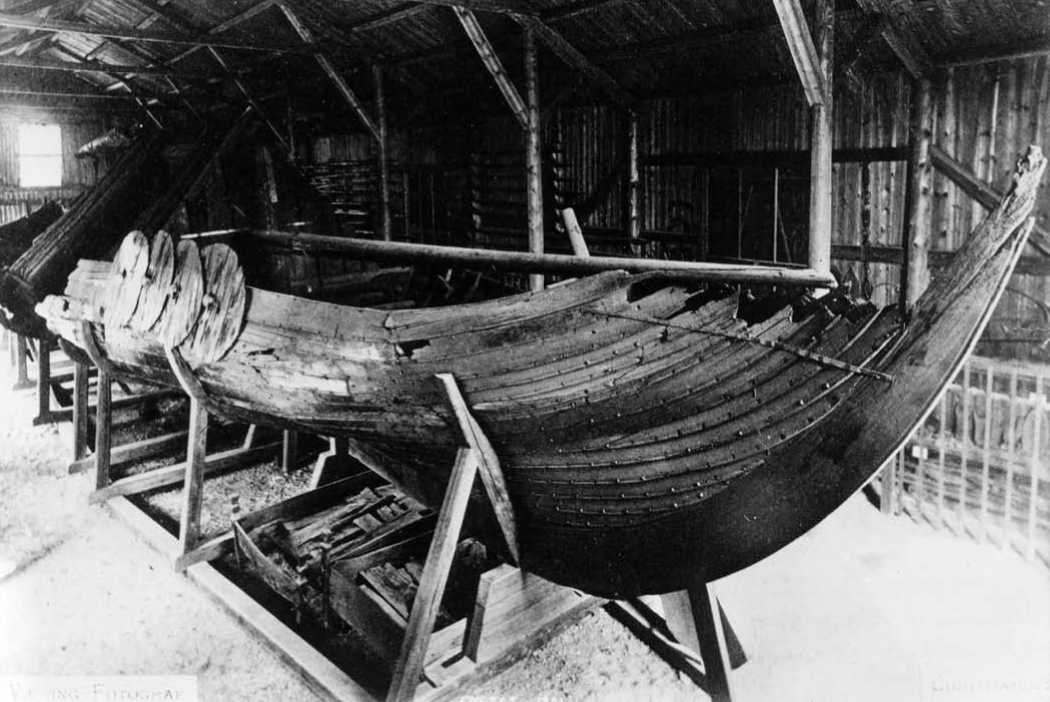The manner in which Viking ships were built can be seen by examining the remains of some that have been excavated in the past two centuries.
Perhaps the most famous is the so-called Gokstad ship, found in Norway in 1880. The hull was made of oak, selected for its hardness and stability, while the planks making up the deck, the mast, and the oars were made of pine. To cut and fashion these wooden parts, the builders used metal axes and saws, sharp knives, and chisels.
The initial construction step was to carve the keel, the spinelike, T-shaped piece of wood running lengthwise along the bottom of the hull. Joined to each end of the keel was a piece of wood that curved upward, becoming the prow in the front and the stern in the rear. Meanwhile, along the central section of the keel a number of wooden ribs curved upward. The hull boards, or strakes, were attached to these ribs. Each strake overlapped the one below it, a method called "clinkering."
The deck area of the Gokstad ship featured deck planks held together by iron nails. There were also wooden benches for the rowers and a pine mast 33 feet (10m) high. Evidence shows that

The famous Gokstad ship, discovered in 1880, was partially reconstructed in the Viking Ship Museum in Oslo, Norway.
The sail was 36 feet (11m) across and made of white wool with sewn-on red stripes. When this sail was in use, it likely allowed the vessel to attain a speed of up to 20 knots (23 miles per hour; 37km/h). Probably the sail was employed mainly for voyages in the open sea, while the oars were used mostly for travel along the coastlines.
Navigation was of course easiest along the coastlines, where captains and crews could use sightings of various landmarks on shore for guidance. It was a very different story when they were out in the open sea and out of
Sight of land. According to Haywood:
Though they lacked the magnetic compass, the Vikings possessed a simple sun compass which could locate north with tolerable accuracy in clear weather. Viking navigators could also use the stars to judge latitude, a great aid to navigation if the latitude of the destination was known. [In addition] navigators would have been heirs to a stock of orally transmitted practical knowledge of sea and weather condi-tions.37




 World History
World History









